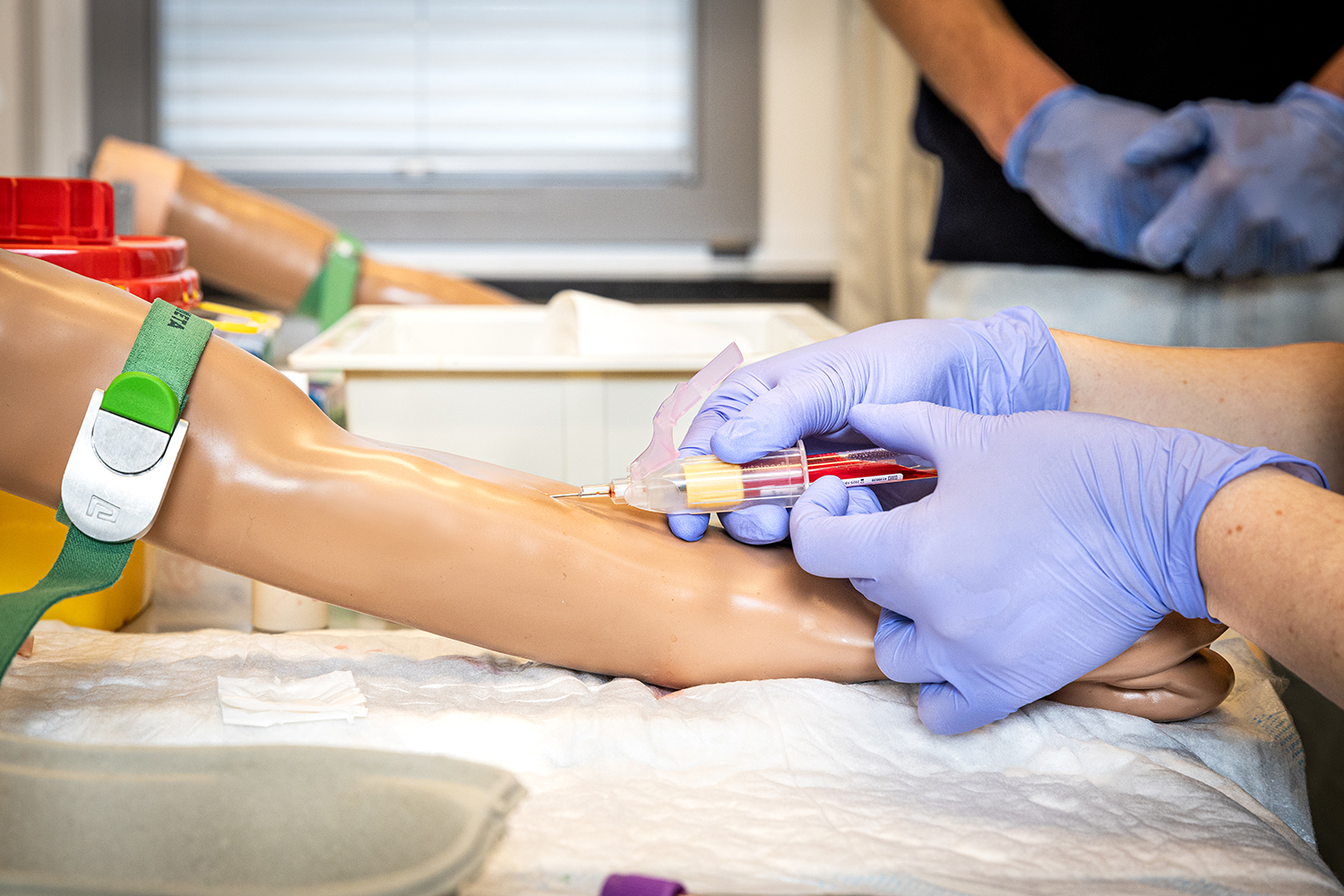
In health professions education, simulations are often associated with high-tech tools like virtual reality, but non-digital simulations have long played a central role in medical training. From historical manikins made of leather or porcelain to everyday objects like balloons, cigarette paper, or chalkboards, these low-tech materials offer tactile and sensory experiences that help students understand and perform clinical tasks (Nott & Harris, A, 2022).

Simulation arm for medical skills training at UM Skillslab (Maastricht University, 2024).
Though simulations simplify reality, their partial fidelity can enhance learning by making complex processes tangible, repeatable, and easier to reflect on (Nott & Harris, A, 2022). These tools can encourage bodily awareness and nuanced understanding, especially when patient contact is limited.